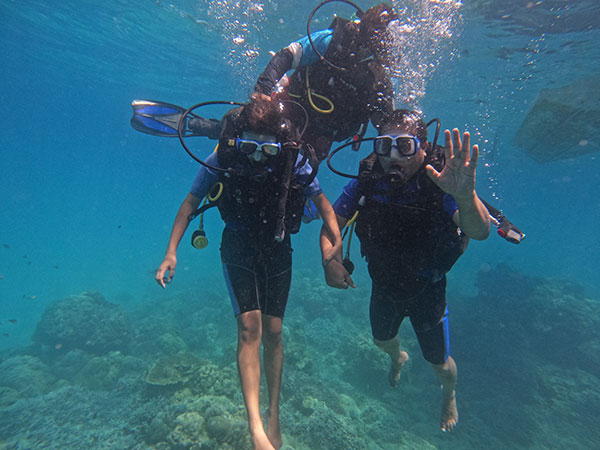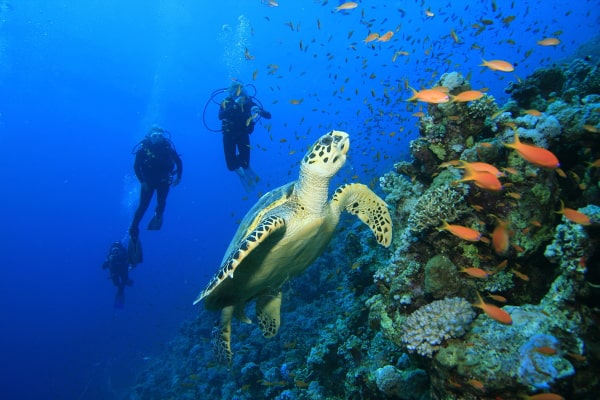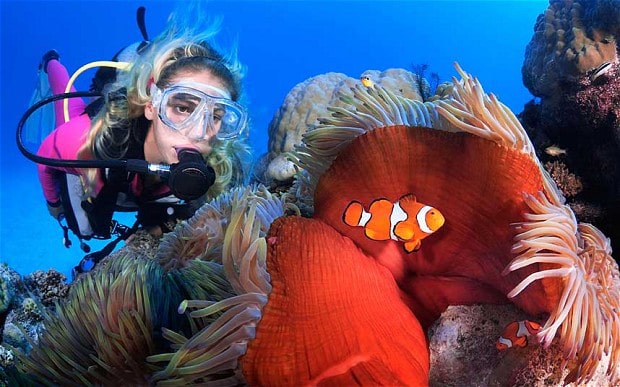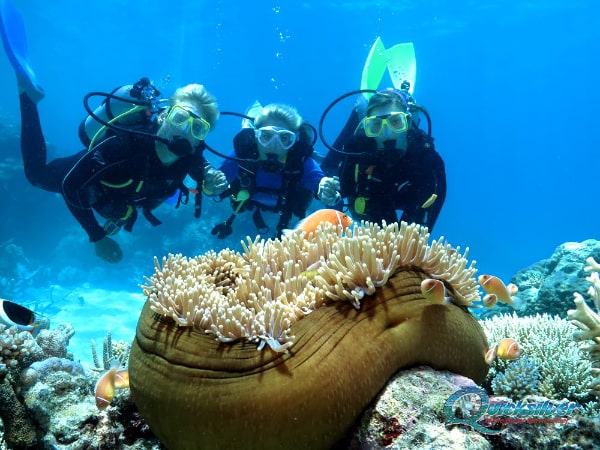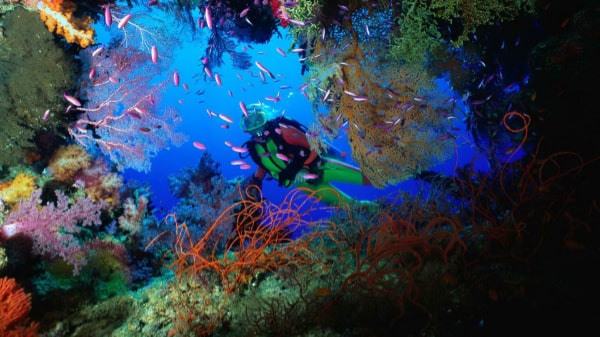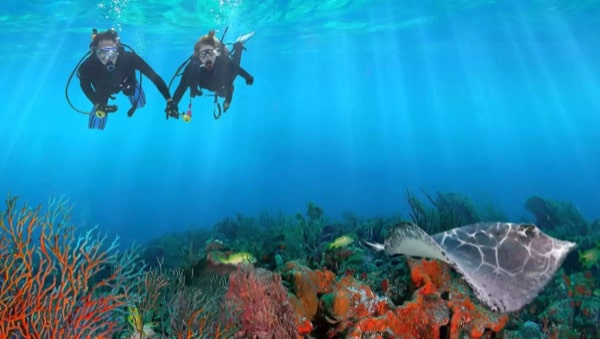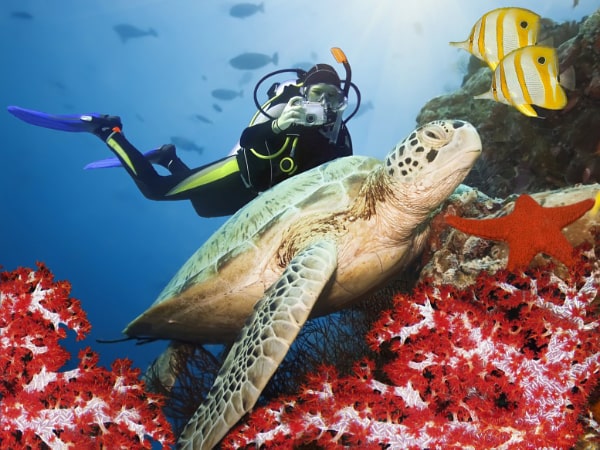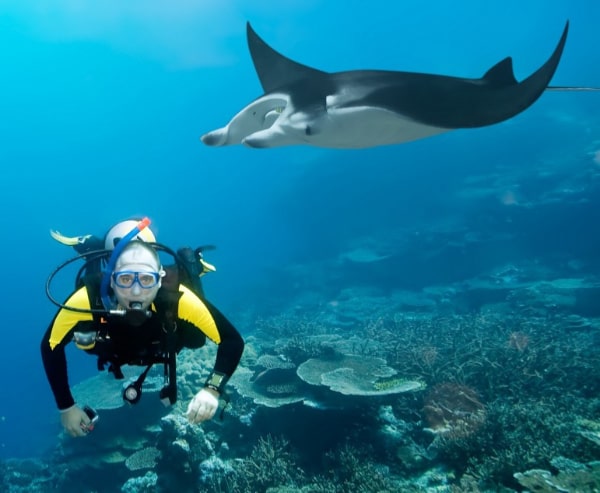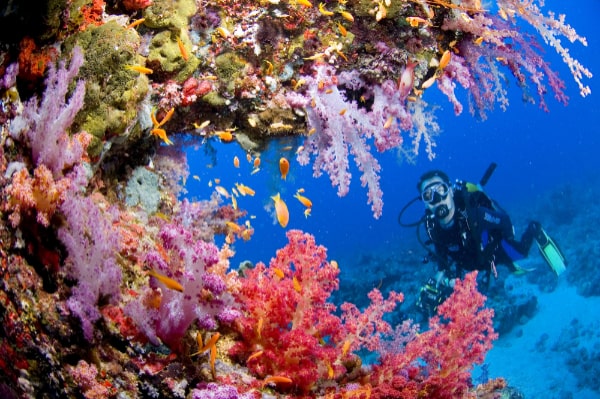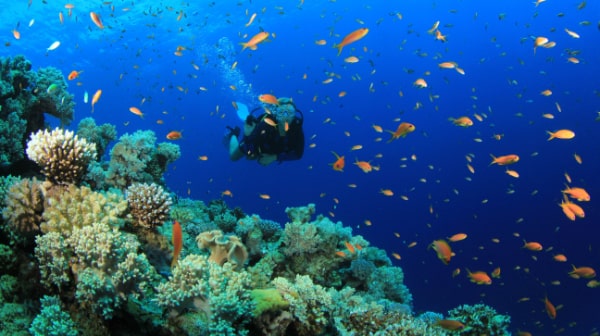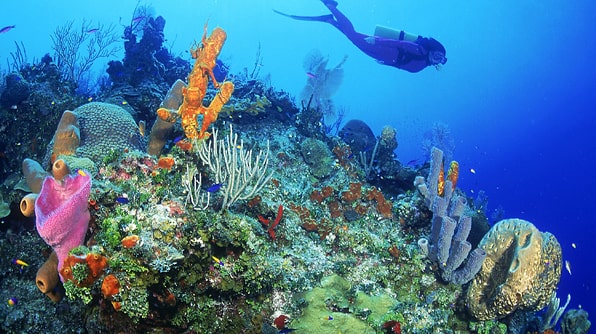
Scuba Diving
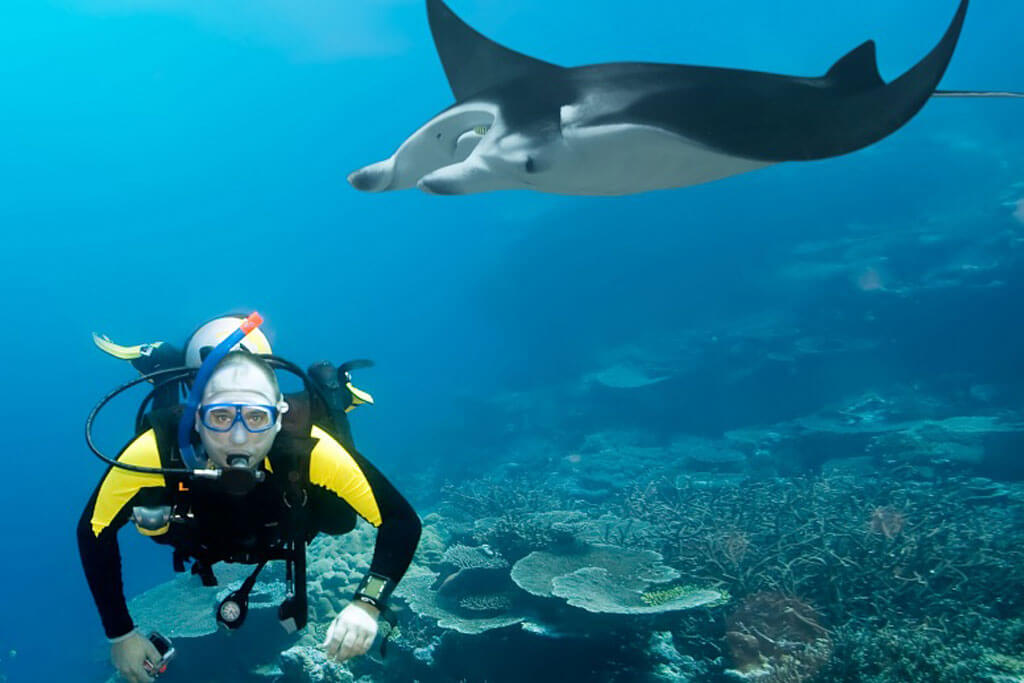
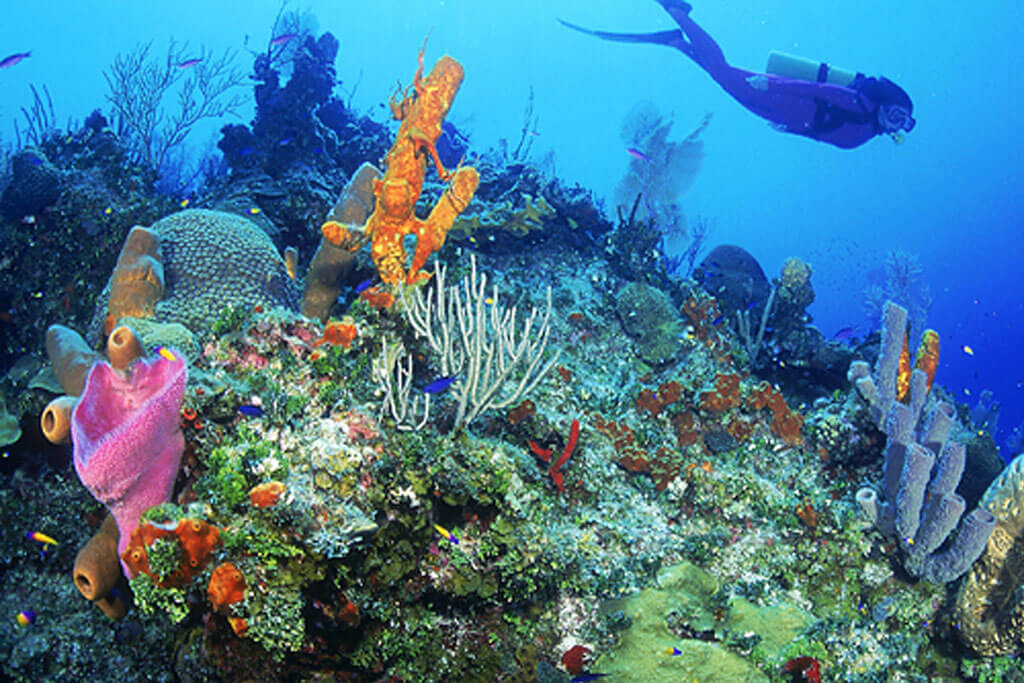
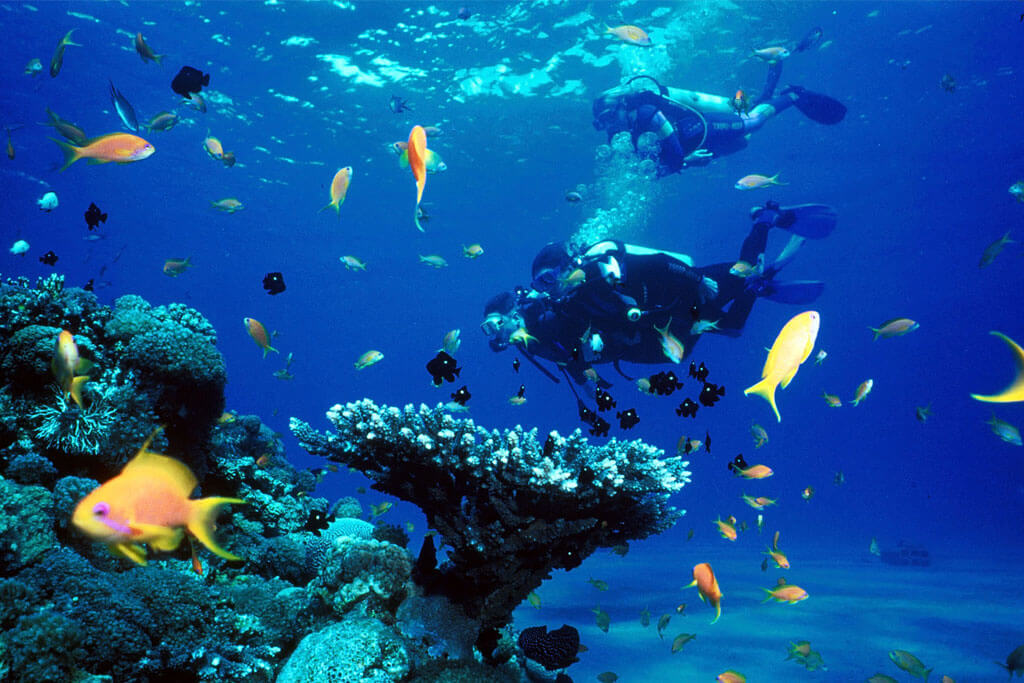
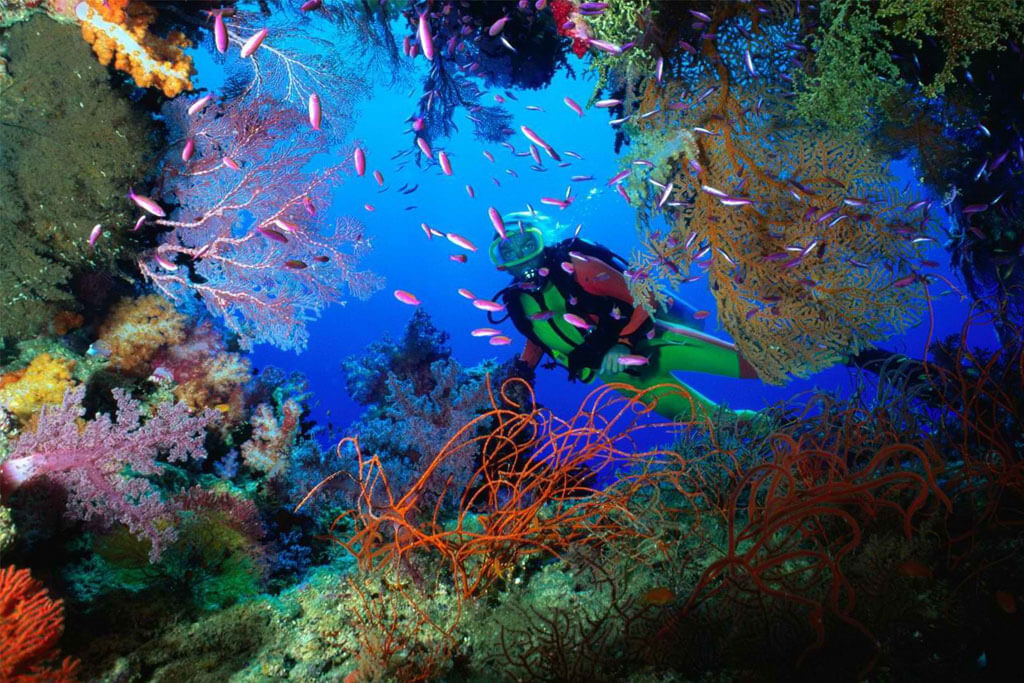
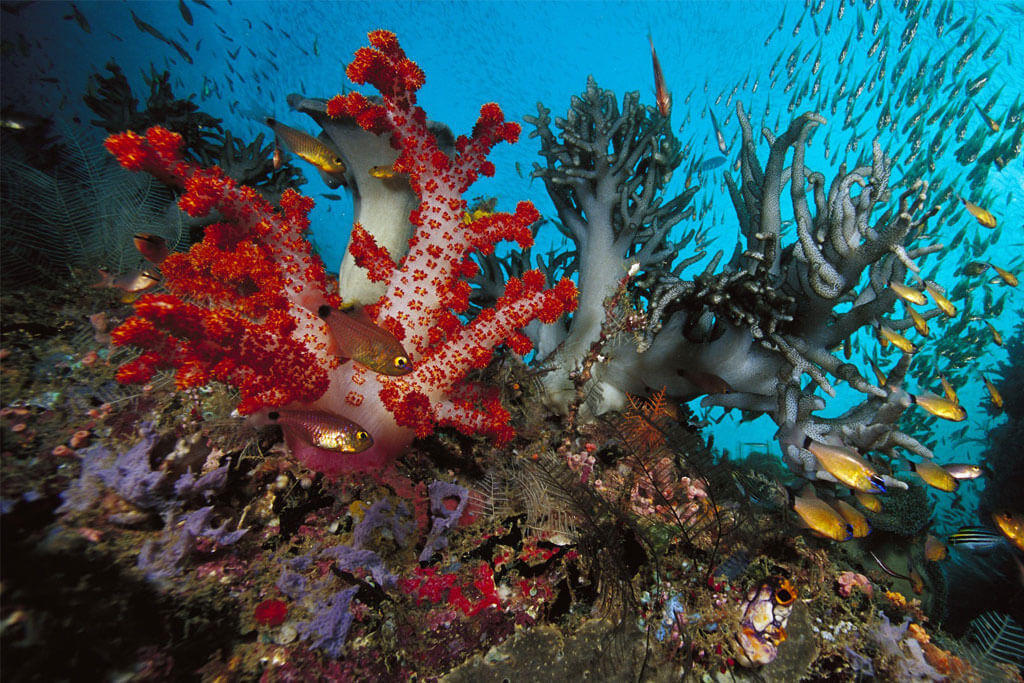
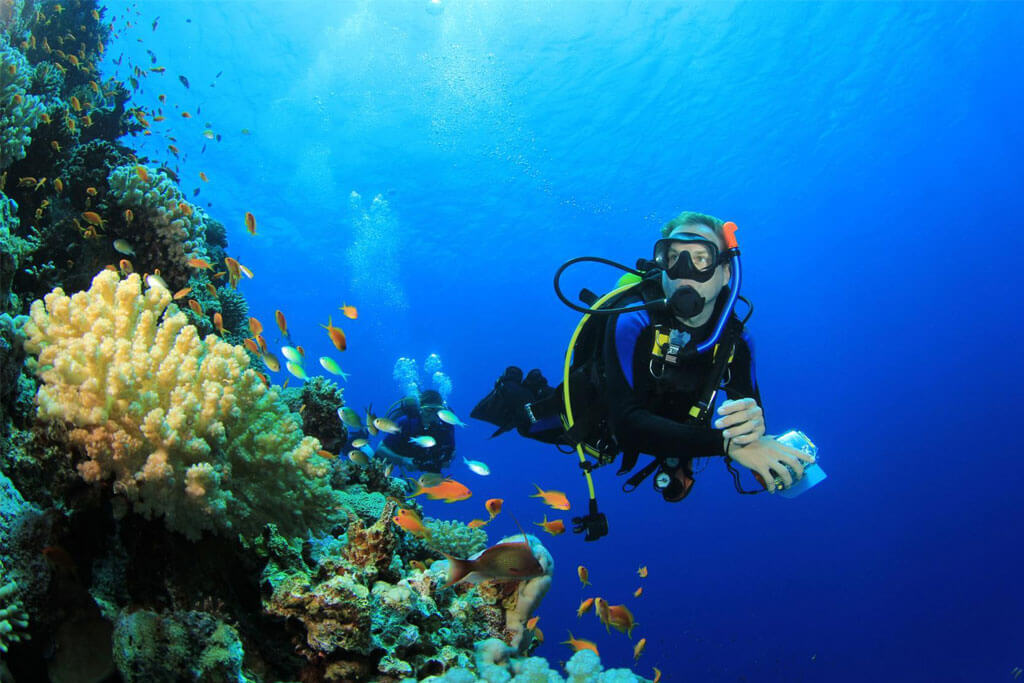
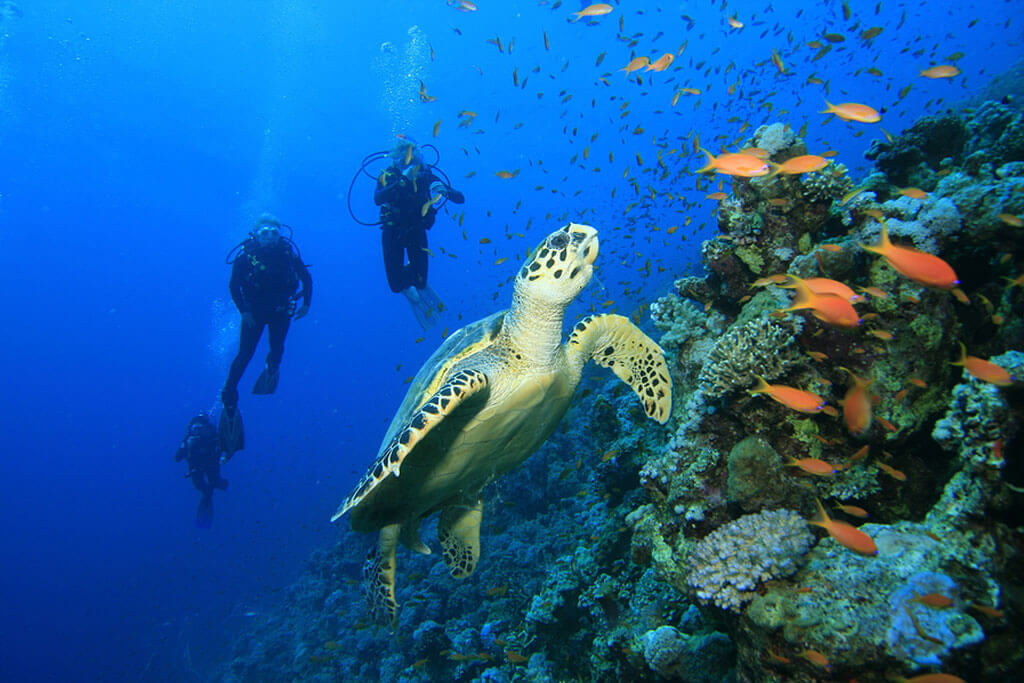
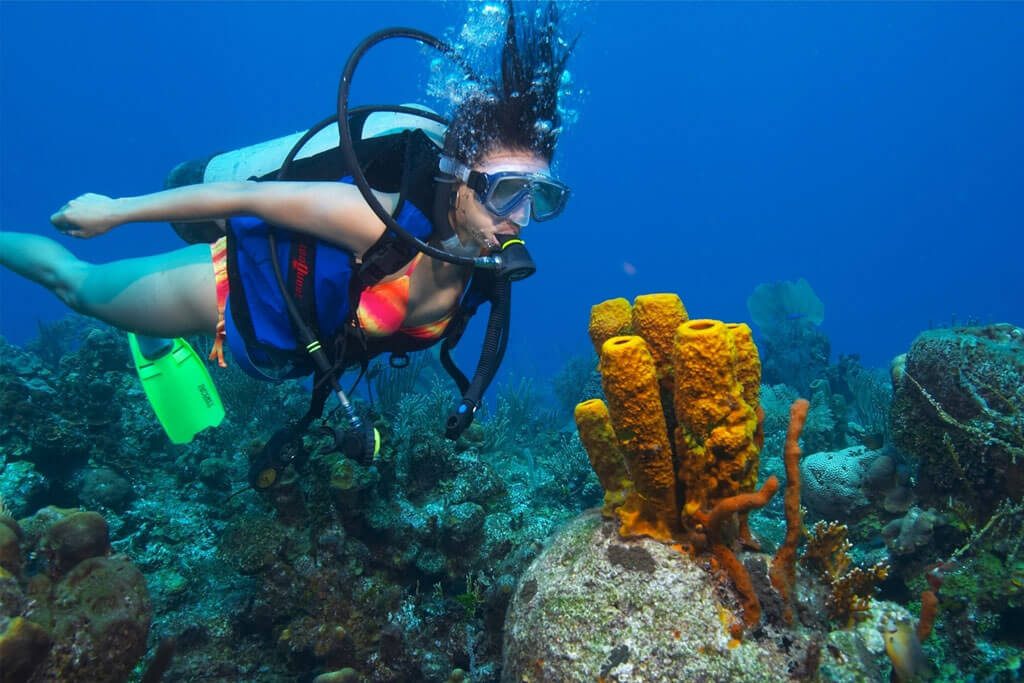
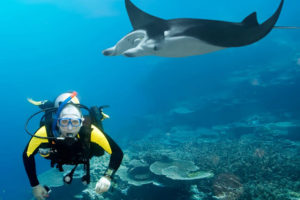
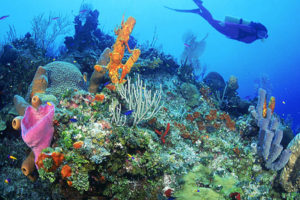
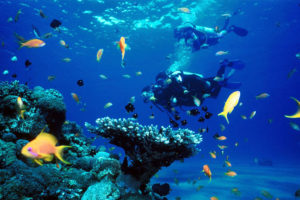
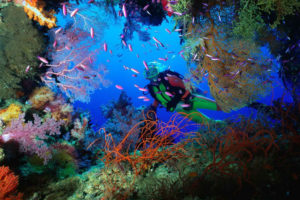
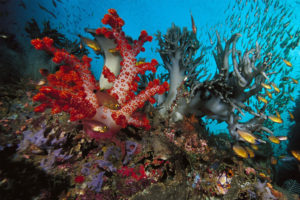
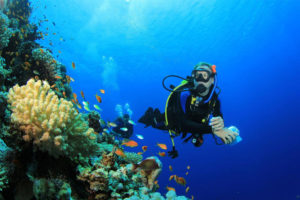
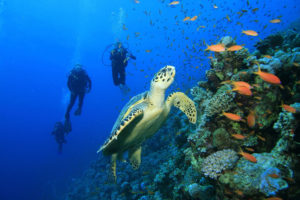
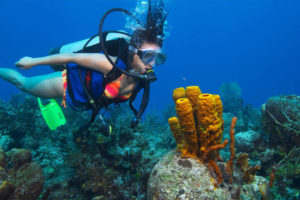
Scuba Diving in Andaman
HIGHLIGHTS
Diving Starts Time: morning at 0830hrs at North Bay Island and 0630 Hrs at Havelock
Best Timing: Morning
Duration: 45 Minutes (Including Training)
Under Water Dive: 20 – 25 Minutes
Depth: 8 to 12 Meter
For Safety: Scuba divers presents in Diving
Child below 08 Yrs: Not fit for diving
Inclusion: Diving Photos and Videos
Booking: In advance
DESCRIPTION
Scuba diving in the Andaman Islands is an extraordinary experience that unveils a world of underwater wonders. With its crystal-clear waters, diverse marine life, and vibrant coral reefs, the Andaman Sea offers an ideal setting for scuba diving enthusiasts of all levels. Here is a description of scuba diving in the Andaman Islands:
As you descend into the azure waters of the Andaman Sea, you’ll be greeted by a breathtaking underwater realm. The visibility is often exceptional, allowing you to see up to 30 meters or more. The warm tropical waters create the perfect environment for an abundance of marine life, including colorful fish, mesmerizing coral formations, and intriguing creatures like turtles, rays, and even sharks.
The Andaman Islands boast numerous diving sites, each with its unique charm. Popular dive spots include Havelock Island, Neil Island, and the Mahatma Gandhi Marine National Park. These locations offer a variety of dive experiences, from gentle, shallow reefs suitable for beginners to thrilling drift dives and deep-sea exploration for more experienced divers.
Whether you’re a novice or a seasoned diver, there are diving centers and certified instructors available to guide you through the underwater adventures. They prioritize safety and provide comprehensive briefings and equipment to ensure a secure and enjoyable dive.
Diving in the Andaman Islands is not just about the marine life; it’s also an opportunity to immerse yourself in stunning coral gardens. The vibrant colors and intricate formations of hard and soft corals create a surreal underwater landscape. Exploring these coral ecosystems is like stepping into a living, breathing work of art.
Scuba diving trips often include multiple dives, allowing you to explore different sites and maximize your underwater experiences. From shallow reefs teeming with fish to thrilling encounters with larger marine species, every dive promises a unique adventure.
Whether you’re looking to obtain a diving certification, embark on a guided dive tour, or participate in specialized diving courses, the Andaman Islands offer a wealth of options to suit your preferences and skill level.
Scuba diving in the Andaman Islands is an unforgettable experience that allows you to connect with the incredible marine biodiversity of the region. It’s an opportunity to witness the beauty and fragility of the underwater world, fostering a sense of appreciation and conservation for these precious ecosystems.
Note: Before participating in scuba diving activities, it is essential to undergo proper training and follow the guidelines and safety measures provided by certified diving instructors and centers.
 TYPES OF SCUBA DIVING:
TYPES OF SCUBA DIVING:
Shore diving: Shore diving in Andaman refers to scuba diving that takes place directly from the shore, rather than from a boat, in the Andaman Islands of India. The Andaman Islands are known for their clear waters, vibrant coral reefs, and diverse marine life, making it a popular destination for scuba diving enthusiasts. The islands offer a range of dive sites accessible from the beach, including coral gardens, shallow reefs, and submerged rock formations. Some popular dive sites in Andaman for shore diving include Lighthouse, North Bay, Chidiya Tapu, and Elephant Beach. The dive sites in Andaman cater to both beginners and experienced divers, and divers can expect to see a variety of marine life, including reef sharks, rays, turtles, and colorful tropical fish. As with any type of diving, proper planning, preparation, and equipment are essential to ensure a safe and enjoyable dive in Andaman’s shore diving locations.
Boat Dives: Boat dives in Andaman are scuba diving experiences that take place from a boat rather than the shore. They offer access to dive sites that are further offshore and deeper, and may not be reachable from the shore. Boat dives are conducted by dive operators or centers, who provide equipment, transport, and a guide. Popular dive sites in Andaman for boat diving include the Barracuda City, Dixon’s Pinnacle, Fish Rock, and Jackson’s Bar, with the chance to see a range of marine life. While boat diving requires additional planning and preparation, it offers divers access to some of the most stunning and diverse dive sites in the region, making it a must-do activity for any diving enthusiast visiting Andaman.
Night Dives: Night dives in Andaman refer to scuba diving activities that take place after sunset, offering divers the opportunity to explore the underwater world in a different light. The Andaman Islands offer several night dive locations, including Havelock Island, Neil Island, and Port Blair, among others. Night dives provide an opportunity to observe nocturnal marine life, such as octopuses, crabs, lobsters, and bioluminescent plankton, that are not typically visible during the day.
DIFFERENCE BETWEEN SHORE DIVING & BOAT DIVING?
Shore diving and boat diving are two different methods of accessing dive sites and have some key differences. Here are the main distinctions between shore diving and boat diving:
Shore Diving:
Access: Shore diving involves entering the water directly from the shore or beach. Divers can walk into the water, often with their equipment, and start the dive from the shallow water near the coastline.
Locations: Shore diving is typically done in areas where the dive site is close to the shoreline, allowing divers to easily access the underwater environment without the need for a boat.
Independence: Shore diving offers a level of independence, as divers can plan and execute their dives at their own pace. They have more control over the logistics, equipment setup, and dive planning.
Equipment Transportation: In shore diving, divers usually transport their equipment from their vehicle or nearby location to the dive site on foot. This may require carrying the equipment over short distances, which can be physically demanding.
Dive Duration: Shore dives are generally shorter in duration as divers are limited by the distance they can comfortably swim from the shore and the time they can spend underwater.
Conditions: Shore diving conditions can vary depending on the specific location. It is important to consider factors like currents, surf, and entry/exit points, as they can impact the ease and safety of the dive.
Access to Amenities: When shore diving, access to amenities such as restrooms, changing facilities, and refreshments may be limited, depending on the location.
Boat Diving:
Access: Boat diving involves reaching the dive site by boat, which takes divers to offshore or more distant locations that are not easily accessible from the shore.
Locations: Boat diving allows divers to explore a wider range of dive sites, including deeper reefs, underwater caves, and wreck sites that are often further offshore.
Convenience: Boat diving provides convenience in terms of transportation to and from the dive site. Divers typically board the boat at a designated dock or harbor, and the boat captain or crew takes care of navigation and logistics.
Equipment Handling: In boat diving, divers often have dedicated spaces on the boat to set up and store their equipment. This reduces the physical effort required to transport the equipment to the dive site.
Dive Duration: Boat dives can be longer in duration compared to shore dives, as the boat can take divers to more distant or deeper dive sites that offer extended bottom times.
Conditions: Boat diving allows access to different dive sites and conditions, including sites with stronger currents or sites that require specific boat-based entry methods such as drift diving or liveaboard diving.
Amenities: Most diving boats are equipped with amenities such as restrooms, rinse tanks for equipment, shaded areas, and sometimes even refreshments or snacks.
Both shore diving and boat diving have their advantages and appeal to different divers based on their preferences and the specific dive site. Some divers enjoy the ease and independence of shore diving, while others appreciate the convenience and access to a wider range of dive sites offered by boat diving. Ultimately, the choice between shore diving and boat diving depends on factors such as location, dive site accessibility, dive objectives, and personal preferences.
DIFFERENCE BETWEEN SNORKELING AND SCUBA DIVING?
Snorkeling and scuba diving are both popular activities that allow people to explore the underwater world, but they differ in terms of equipment, depth, and level of training required. Here are the main differences between snorkeling and scuba diving:
Equipment: Snorkeling typically requires minimal equipment. It involves wearing a snorkel (breathing tube), a mask to see underwater, and fins to aid in swimming. Scuba diving, on the other hand, involves more complex equipment, including a buoyancy control device (BCD), regulator, dive tank, weight system, mask, fins, and sometimes a dive computer or depth gauge.
Depth: Snorkeling is usually done near the surface of the water, allowing you to observe the underwater world from above. It is limited to the depth that you can comfortably hold your breath and stay submerged. Scuba diving, however, allows you to descend to greater depths, depending on your certification level and training, which can range from recreational diving depths (around 18-30 meters) to deeper technical or professional dives.
Breathing: In snorkeling, you breathe through a snorkel tube that extends above the water’s surface, allowing you to inhale air directly from the atmosphere. With scuba diving, you use a regulator connected to a dive tank, which provides compressed air for breathing underwater.
Training and Certification: Snorkeling does not require specific training or certification, as it is a surface-level activity that relies on basic swimming skills and comfort in the water. Scuba diving, on the other hand, requires proper training and certification from recognized diving organizations (such as PADI or SSI). Divers learn essential skills, safety procedures, and dive planning through training courses before they can participate in scuba diving activities.
Duration: Snorkeling is generally a shorter activity, as it relies on holding your breath while observing the underwater world. Scuba diving allows for longer underwater exploration since divers breathe from a dive tank that contains a larger supply of air. Dive times can vary depending on factors such as depth, air consumption rate, and dive plan.
Experience and Access: Snorkeling is more accessible to a wider range of people, including non-swimmers or those who are not comfortable with diving. It can be enjoyed in shallow water near the beach or from a boat. Scuba diving requires a higher level of skill, training, and certification. It often involves boat trips to specific dive sites and may have age and health restrictions.
Both snorkeling and scuba diving offer unique opportunities to observe marine life and explore the underwater environment. Choosing between the two activities depends on your comfort level, desired depth of exploration, and interest in obtaining proper training and certification for scuba diving.
DIFFERENCE BETWEEN SCUBA DIVING & HELMET DIVING
Scuba diving and helmet diving are both underwater activities that allow individuals to explore the underwater world, but they differ in several key aspects. Here are the main differences between scuba diving and helmet diving:
Breathing Method: In scuba diving, divers use self-contained underwater breathing apparatus (SCUBA) to carry their own air supply and breathe underwater through a regulator connected to a diving cylinder. Helmet diving, on the other hand, involves wearing a specially designed helmet connected to an air supply on the surface through a hose. The helmet provides a constant supply of air, eliminating the need for divers to carry their own air source.
Depth Limitations: Scuba diving allows for greater depth exploration as divers can descend to various depths depending on their training and certification level. Helmet diving is typically conducted at shallower depths, often in the range of 3 to 10 meters (10 to 33 feet), where the surface air supply can be maintained easily.
Mobility and Equipment: Scuba divers have greater mobility and freedom underwater as they can swim and move in three dimensions using fins and a buoyancy control device (BCD). They have more flexibility to explore different areas. Helmet divers, on the other hand, have limited mobility due to the heavy helmet and the air supply hose. They usually walk along the seabed or are lowered from a platform, and their exploration is limited to the area around the descent point.
Skill and Training Requirements: Scuba diving requires certification and proper training from recognized diving organizations. Divers need to learn skills such as buoyancy control, equalization, and underwater navigation. Helmet diving, on the other hand, generally does not require extensive training. Participants receive basic instructions on how to use the helmet and communicate with hand signals, making it more accessible to beginners or individuals without prior diving experience.
Experience and Duration: Scuba diving allows for longer dive durations, depending on factors such as air consumption and decompression limits. Divers can explore underwater for extended periods, typically ranging from 30 minutes to several hours. Helmet diving experiences are usually shorter in duration, often limited to 15-20 minutes per session, due to the air supply limitations of the surface-connected helmet.
It’s important to note that both scuba diving and helmet diving have their own safety considerations, and participants should adhere to guidelines, follow instructions from dive professionals, and prioritize their safety while underwater.
BEST PLACE FOR SCUBA DIVING IN ANDAMAN FOR BEGINNERS & NON-SWIMMERS
The Andaman Islands offer several excellent locations for scuba diving, with each site offering a unique and exciting diving experience. Some of the best places for scuba diving in Andaman are:
SCUBA DIVING AT NORTH BAY ISLAND:
North Bay Island in Andaman is a popular scuba diving destination offering several dive sites suitable for divers of all levels, including beginners. The island is easily accessible by boat from Port Blair and offers clear waters, colorful corals, tropical fish, rays, and sea turtles to explore. Along with scuba diving, North Bay Island also offers other water activities such as snorkeling, sea walking, and glass-bottom boat rides. Overall, it’s a thrilling and unforgettable experience to witness the diversity of marine life in Andaman.
SCUBA DIVING AT HAVELOCK ISLAND
Scuba diving at Havelock Island in Andaman is a must-try activity, featuring crystal-clear waters, stunning coral reefs, and diverse marine life. The island offers several dive sites suitable for divers of all levels, including beginners, with Nemo Reef being the designated dive site for beginners. Accompanied by a trained guide or instructor, you can expect to see a variety of marine life, including colorful corals, tropical fish, octopuses, and sea turtles.
SCUBA DIVING AT NEIL ISLAND
Scuba diving at Neil Island in Andaman is an exciting activity that allows you to explore the stunning coral reefs and diverse marine life of the island. The designated dive site for beginners is near Bharatpur Beach, where the water is calm and shallow. You can expect to see a range of marine life, including colorful corals, tropical fish, rays, and sea turtles. Neil Island also offers other water activities such as snorkeling, kayaking, and glass-bottom boat rides. Overall, scuba diving at Neil Island is an exhilarating experience that allows you to witness the beauty of Andaman’s marine life and explore the mesmerizing underwater world.
In summary, the Andaman Islands offer several fantastic locations for scuba diving, with Havelock Island, Neil Island, Cinque Island, and Mahatma Gandhi Marine National Park being some of the best places to explore the underwater world.
15 SPOTS FOR SCUBA DIVING IN ANDAMAN
On your Andaman vacation, prepare to explore and unravel the mysterious ocean world and its vivid inhabitants. Here are the top 15 sites for scuba diving in Andaman you can map. Whether you are a beginner, an intermediate, or an expert, there is enough option for all.
- Lighthouse – Experience Night Diving
- Aquarium – A Beginner’s Paradise
- Mac Point – Swim With The Dugongs
- Barracuda City – Meet The Sea Turtles
- Seduction Point – The Rock With Staghorn Corals
- Margherita’s Mischief – Myriad Shades Of Life Underwater
- K Rock – Diving Near A Volcanic Rock
- Bus Stop – A Sloping Seabed With Small Reefs
- Junction – Adventure For Experts
- Mahatma Gandhi Marine National Park, Wandoor – An Exclusive National Park
- Mahatma Gandhi Marine National Park, Jolly Buoy
- North Point, Cinque Island – Among The Clearest Waters In The World
- Bala Reef – The Stunning Spot In Little Andaman Island
- Fish Rock, Passage Island – Fishes Galore!
- Corruption Rock – Home To Unicornfishes & Shipwrecks
WHY SCUBA DIVING IN ANDAMAN?
Andaman is known for its crystal-clear waters and an abundance of coral reefs, making it an excellent spot for scuba diving. Whether you are a beginner or an experienced diver, there are numerous dive sites in Andaman that cater to all levels of expertise. Here are some reasons why you should consider scuba diving in Andaman:
Dive Sites – Andaman has over 50 dive sites, each with its unique features, from coral gardens to shipwrecks, underwater caves to colorful fish.
Marine Life – The Andaman Sea is home to more than 1,000 species of fish, 350 species of coral, and many other marine creatures such as turtles, dolphins, sharks, and rays.
Water Clarity – The visibility in Andaman’s water can reach up to 40 meters, giving you a clear view of the underwater world.
Professional Instructors – There are many professional scuba diving schools in Andaman that offer a safe and comfortable experience. You will be guided by certified instructors who will ensure your safety and provide you with an unforgettable experience.
BEST TIME FOR SCUBA DIVING IN ANDAMAN
The best time for scuba diving in Andaman is between December and May when the water is clear, and the weather is pleasant. During the monsoon season, which is from June to September, most of the dive sites are closed due to strong winds and heavy rains. However, if you’re looking for a unique experience, you can try diving during the monsoon season when the water is rough, and the visibility is low.
SCUBA DIVING PACKAGES IN ANDAMAN
Many dive centers offer various scuba diving packages, including single dives, introductory dives for beginners, and certification courses for experienced divers. The price of the packages depends on the number of dives and the level of certification. You can also opt for a package that includes transportation, meals, and accommodation.
COST OF SCUBA DIVING IN ANDAMAN ISLANDS
- Havelock Island – Seashore Dive at Nemo Reef, Beach No. 3 for INR 3,490/-
- Boat Dive at Dongi Dive for ₹ 5,500/-
- Port Blair – Seashore Dive at North Bay Beach for INR 3,500/-
- Neil Island – Boat Dive at Bharatpur Beach for INR 5,500/-
- Barren Island – Boat Dive near the island for INR 22,700/-
SCUBA DIVING PACKAGE INCLUDES
A scuba diving package typically includes:
- Scuba diving equipment (tank, regulator, BCD, dive computer, weights)
- Certified dive guide or instructor
- Boat or transportation to dive sites
- Multiple dives at different locations
- Tanks and air fills
- Safety equipment (dive flags, surface marker buoys, emergency oxygen)
- Optional professional photos or videos
- Diving Certificate
HOW TO BOOK SCUBADIVING IN ANDAMAN
You can conveniently book scuba diving in Andaman through our travel agency. Contact us with your preferred dates, group size, and diving experience level. Our experienced agents will provide you with information about reputable dive centers and help you choose the one that suits your needs. We will handle the booking process, ensuring all necessary permits and certifications are in place. You will receive a confirmation with all the details of your scuba diving experience, including the date, time, and any specific requirements. Let our travel agency take care of the arrangements, allowing you to enjoy a memorable scuba diving adventure in Andaman.
WHAT IS THE BASIC REQUIREMENT FOR SCUBA DIVING?
Dive equipment typically consists of several items to ensure a safe and comfortable diving experience. These include:
Mask: A mask is used to create an air pocket around your eyes so that you can see clearly underwater.
Snorkel: A snorkel is a tube that allows you to breathe while your head is underwater.
Fins: Fins are used to help propel you through the water with minimal effort.
Wetsuit: A wetsuit is typically made of neoprene and is designed to keep you warm in cold water and to provide some protection against underwater life.
Scuba unit: A scuba unit allows you to breathe underwater and typically consists of:
Scuba cylinder: A metal tank that holds compressed air or another breathing gas.
BCD (Buoyancy Control Device): A vest-like device that helps you controls your buoyancy and stay at the desired depth.
Regulator: A device that attaches to the scuba cylinder and delivers air to your mouthpiece.
Diving instruments: Instruments such as a depth gauge, compass, and dive computer that provide important information about your dive.
Weight system: A weight belt or other system used to help you descend and stay at the desired depth.
All of these pieces of equipment are crucial to a safe and enjoyable diving experience. It’s important to make sure that your equipment is properly fitted and maintained before each dive.
GENERAL TIPS FOR DIVERS
If you are a fresher planning to try scuba diving for the first time, here are some general tips that can help make your experience enjoyable and safe:
Choose a reputed dive center: Choose a dive center that has experienced and certified instructors and uses high-quality equipment.
Check the weather: The weather in Andaman can be unpredictable, so it’s important to check the weather conditions before going for a dive.
Get a medical check-up – it is important to get a medical check-up before diving to ensure you are physically fit to participate in the activity.
Learn to breathe properly – scuba diving requires slow, deep breaths, so it is essential to learn to breathe properly.
Practice your buoyancy control – maintaining proper buoyancy control is key to an enjoyable and safe dive.
Keep your equipment maintained – make sure your equipment is properly maintained and serviced regularly to avoid any malfunctions underwater.
Plan your dive and dive your plan – before diving, make sure to plan your dive and communicate with your dive buddy about the details of the dive.
Don’t touch the marine life – touching or disturbing marine life can harm the ecosystem and may put you in danger.
Stay hydrated – it’s easy to get dehydrated while scuba diving, so make sure to stay hydrated before and after your dive.
Asthma: People with asthma should consult their doctor before scuba diving as the change in pressure can trigger asthma attacks.
Cardiovascular problems: Scuba diving can be strenuous on the heart, and people with heart problems or high blood pressure should consult their doctor before diving.
Ear problems: People with a history of ear infections or perforated eardrums should not scuba dive as the change in pressure can cause damage to the ears.
Sinus problems: People with a history of sinus problems or allergies should consult their doctor before diving as the change in pressure can cause discomfort and pain.
Medications: Certain medications, such as decongestants and antihistamines, can impact the body’s ability to equalize pressure while diving. Always consult your doctor and the dive instructor before diving if you are on any medications
Always follow instructions – follow the instructions of your diving instructor and never dive beyond your limits.
Enjoy the experience – scuba diving is a unique and exciting experience, so make sure to relax, enjoy the beauty of the underwater world and have fun!
Conclusion: Scuba diving in Andaman is an experience of a lifetime. With its diverse underwater landscapes and marine life, Andaman offers a unique experience that cannot be found anywhere else. So, pack your bags and get ready to explore the underwater world.
PACKING TIPS FOR A COMFORTABLE SCUBA DIVING EXPERIENCE IN ANDAMAN
The following are some packing tips for scuba diving in Andaman:
Scuba Gear: Pack your wetsuit, mask, fins, dive computer, and regulator if you prefer to use your own equipment.
Sunscreen: Carry waterproof sunscreen to protect your skin from the harsh sun and UV rays.
Swimsuit: Wear a swimsuit under your wetsuit for maximum comfort during the dive.
Rash Guard: A rash guard can protect you from the sun, prevent rashes, and keep you warm during dives.
Towel: Bring a quick-dry microfiber towel to dry off after a dive.
Flip Flops or Water Shoes: Flip flops or water shoes are essential for walking on the beach or getting in and out of the dive boat.
Dry Bag: Pack your valuables in a dry bag to protect them from getting wet.
Camera: Capture the mesmerizing underwater world with an underwater camera.
MEDICAL AND HEALTH RESTRICTIONS
Before going for scuba diving, it is important to be aware of any medical concerns that may affect your ability to dive safely. Some of the common medical concerns one should be aware of include:
Cardiovascular disease: Individuals with a history of heart problems, high blood pressure, or stroke may need to obtain medical clearance before diving.
Respiratory disease: People with asthma, chronic obstructive pulmonary disease (COPD), or other lung conditions may need to avoid diving altogether or obtain medical clearance before diving.
Ear problems: Individuals with a history of ear infections, perforated eardrums, or ear surgery may need to avoid diving or take precautions to prevent ear injuries.
Sinus problems: People with sinus infections, congestion, or other sinus problems may need to avoid diving or take precautions to prevent sinus barotrauma.
Medications: Certain medications, such as decongestants, sedatives, and some prescription drugs, can affect a diver’s ability to equalize pressure and should be avoided or used with caution.
Pregnancy: Pregnant women should avoid scuba diving as it can pose risks to the developing fetus.
Age: Scuba diving is a physically demanding activity and may not be suitable for older individuals or those with certain health conditions.
It is important to consult with a healthcare provider and a certified diving professional before engaging in scuba diving to ensure that you are physically and medically fit to dive safely.
WHO CAN DO SCUBA DIVING?
- Age: Most scuba diving organizations have minimum age requirements, typically around 10-12 years old for junior certification and 15-18 years old for full certification.
- Physical Fitness: Divers should be in good health and reasonably fit, with certain medical conditions potentially precluding individuals from diving.
- Training and Certification: It is recommended to receive proper training and certification from recognized organizations such as PADI or SSI.
- Mental Preparedness: Divers should be mentally prepared to handle potential risks and emergencies underwater and follow instructions.
- Equalization Ability: Individuals should have the ability to equalize the pressure in their ears effectively.
Remember to always consult with certified dive professionals and follow their guidelines for a safe and enjoyable diving experience.
IS IT SAFE?
Certainly! Here are the key points regarding the safety of scuba diving:
- Training and Certification: Proper training and certification provide divers with the necessary knowledge and skills for safe diving.
- Dive Professionals: Diving with experienced and qualified professionals enhances safety.
- Equipment Checks: Conducting thorough equipment checks before each dive ensures everything is functioning correctly.
- Dive Planning and Safety Procedures: Planning dives and following established safety procedures mitigate risks.
- Physical Fitness and Health: Good physical fitness and consulting with a physician regarding any medical conditions are important for safe diving.
- Awareness and Risk Management: Being aware of limits, managing risks, and diving within skill levels contribute to safety.
- Emergency Preparedness: Training in emergency procedures and carrying appropriate safety equipment is crucial.
While scuba diving can be safe, it’s essential to understand and address the risks associated with the activity.
WHAT ARE YOU ADVISED NEVER TO DO IN SCUBA DIVING?
Here are some things to never avoid doing in scuba diving:
Never skip the pre-dive safety check – The pre-dive safety check should never be skipped or performed carelessly. This check is a vital step to ensure the proper functioning of the equipment.
Never dive without proper training or certification – Diving is a technical sport that requires proper training and certification. Without proper training, a diver is putting themselves and others at risk.
Never hold your breath while ascending – Holding your breath while ascending can lead to serious lung injuries. It is essential to exhale continuously while ascending to avoid this.
Never exceed your personal limits – It is important to know your personal limits and to dive within those limits. Exceeding these limits can result in serious injury or even death.
Never touch or disturb marine life – Touching or disturbing marine life can cause harm to the animal and also put the diver in danger. Marine life should be observed but not touched.
Never dive with faulty or poorly maintained equipment – Equipment malfunction can lead to dangerous situations underwater. Divers should always check their equipment for proper functioning and maintenance before diving.
Frequently
Asked Questions
Scuba diving is a form of underwater diving where divers use a self-contained underwater breathing apparatus (scuba) to breathe underwater.
No, you do not need any prior experience as the scuba diving instructors will provide you with a brief training session before you dive.
The minimum age requirement for scuba diving in Andaman is 10 years old.
The best time to go scuba diving in Andaman is from November to May, when the water is clear and calm.
The cost of scuba diving in Andaman varies depending on the type of dive, duration of the dive, and the scuba diving center you choose. Generally, it starts from INR 3500 per person for a single dive.
Andaman is known for its diverse marine life, and you can expect to see a variety of fish, turtles, sharks, rays, octopuses, and colorful coral reefs during your dive.
Yes, scuba diving in Andaman is safe, as long as you follow the instructions of the dive instructor and take necessary precautions.
There are various scuba diving courses available in Andaman, ranging from beginner level courses like Discover Scuba Diving to advanced courses like Rescue Diver and Divemaster.
The maximum depth for scuba diving in Andaman is usually around 30 meters, but it may vary depending on the location and dive center policies.
Yes, non-swimmers can go scuba diving in Andaman, as long as they are comfortable in water and can follow the instructions of the dive instructor. Some dive centers also offer introductory dives for non-swimmers.
You should avoid drinking alcohol before a dive because it can impair your judgment, slow your reaction time, and make it difficult to concentrate. Additionally, alcohol can cause dehydration, which can increase the risk of decompression sickness.
You should wait at least 24 hours before flying after diving because during a dive, your body absorbs nitrogen which can form bubbles in your blood and tissues. Flying can cause a rapid decrease in air pressure, which can cause these bubbles to expand and result in decompression sickness. Waiting 24 hours allows your body enough time to eliminate excess nitrogen before flying


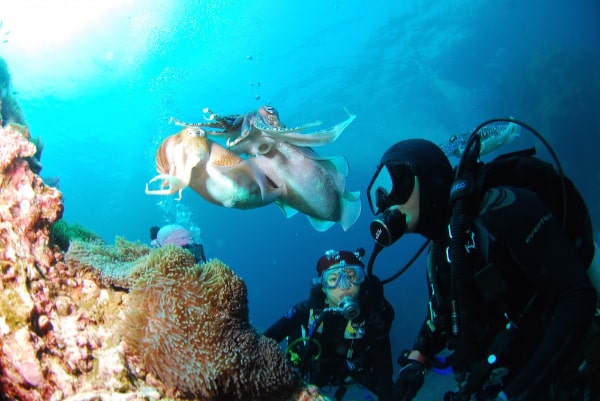
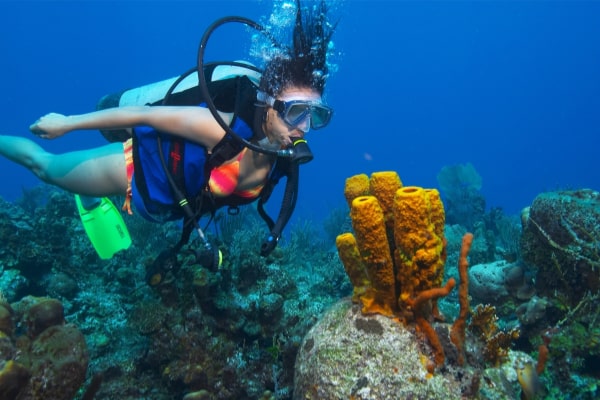 TYPES OF SCUBA DIVING:
TYPES OF SCUBA DIVING: